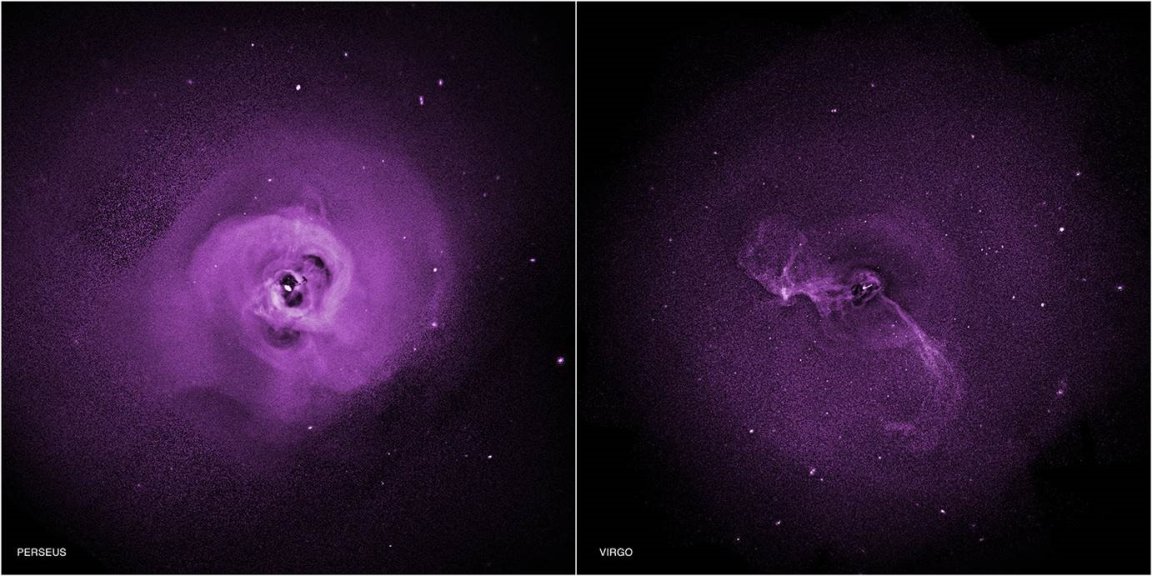

Using the powerful eye of the Chandra X-Ray Observatory, a team of astronomers have come another step closer to solving a tantalizing mystery surrounding stellar birth, one that spans back several years.
Anyone that has ever been on an airplane should be familiar with turbulence; the “force” that makes the ride uncomfortable, if not completely terrifying, at times. Naturally, turbulence — which is explained under the framework of fluid dynamics — isn’t exclusive to Earth. In fact, wherever there is liquid, jet streams and pressure, turbulence surely follows.
Before we get into turbulence and its role in star formation, we must first look at the most fervent location of star formation activity: gargantuan galaxy clusters. We’ve long known that these large collection of galaxies — held together by the sheer force of gravity (with backbones comprised of the elusive dark matter) — make up all large-scale structures. Each of the hundreds, sometimes thousands, of galaxies are encased by huge quantities of gas, which is super-heated to the point that it shines brightly at non-optical wavelengths. In turn, they are a source of interest to X-ray observatories like Chandra.
Previous observations of the inner-workings of galaxy clusters have shown that decidedly, there appears to be a lack of star formation activity.. at least not nearly as much as there should be. As the gas, which can become hotter than a million degrees, cools down, it should give life to an extremely large number of stars, which isn’t the case in most instances.
“We knew that somehow the gas in clusters is being heated to prevent it cooling and forming stars. The question was exactly how,” said Irina Zhuravleva, the study’s author, from Stanford University. “We think we may have found evidence that the heat is channeled from turbulent motions, which we identify from signatures recorded in X-ray images.”
From NASA:
Prior studies show supermassive black holes, centered in large galaxies in the middle of galaxy clusters, pump vast quantities of energy around them in powerful jets of energetic particles that create cavities in the hot gas. Chandra, and other X-ray telescopes, have detected these giant cavities before.
The latest research by Zhuravleva and her colleagues provides new insight into how energy can be transferred from these cavities to the surrounding gas. The interaction of the cavities with the gas may be generating turbulence, or chaotic motion, which then disperses to keep the gas hot for billions of years.
“Any gas motions from the turbulence will eventually decay, releasing their energy to the gas,” said co-author Eugene Churazov of the Max Planck Institute for Astrophysics in Munich, Germany. “But the gas won’t cool if turbulence is strong enough and generated often enough.”
[Reference: “NASA’S Chandra Observatory Identifies Impact of Cosmic Chaos on Star Birth“]
Enter turbulence. Using Chandra, the researchers set their sights on two large galaxy clusters, Perseus and Virgo. By studying and charting fluctuations in the density of their gas, it painted a clear picture of just how much turbulent flow said gas experiences.

“Our work gives us an estimate of how much turbulence is generated in these clusters,” said Alexander Schekochihin (from the University of Oxford). “From what we’ve determined so far, there’s enough turbulence to balance the cooling of the gas.”
“These results support the “feedback” model involving supermassive black holes in the centers of galaxy clusters. Gas cools and falls toward the black hole at an accelerating rate, causing the black hole to increase the output of its jets, which produce cavities and drive the turbulence in the gas. This turbulence eventually dissipates and heats the gas.”
“While a merger between two galaxy clusters may also produce turbulence, the researchers think that outbursts from supermassive black holes are the main source of this cosmic commotion in the dense centers of many clusters.”
The next step is to confirm the same is true with additional galaxy clusters, but the results, which are set to be published in the latest edition of ‘Nature,’ look promising at this point.
This article is listed under a Creative Commons Attribution, Non Commercial-Share-Alike 4.0 International License. However, FQTQ does not own the rights to the images that are attached.. Learn more about our republishing policy here.